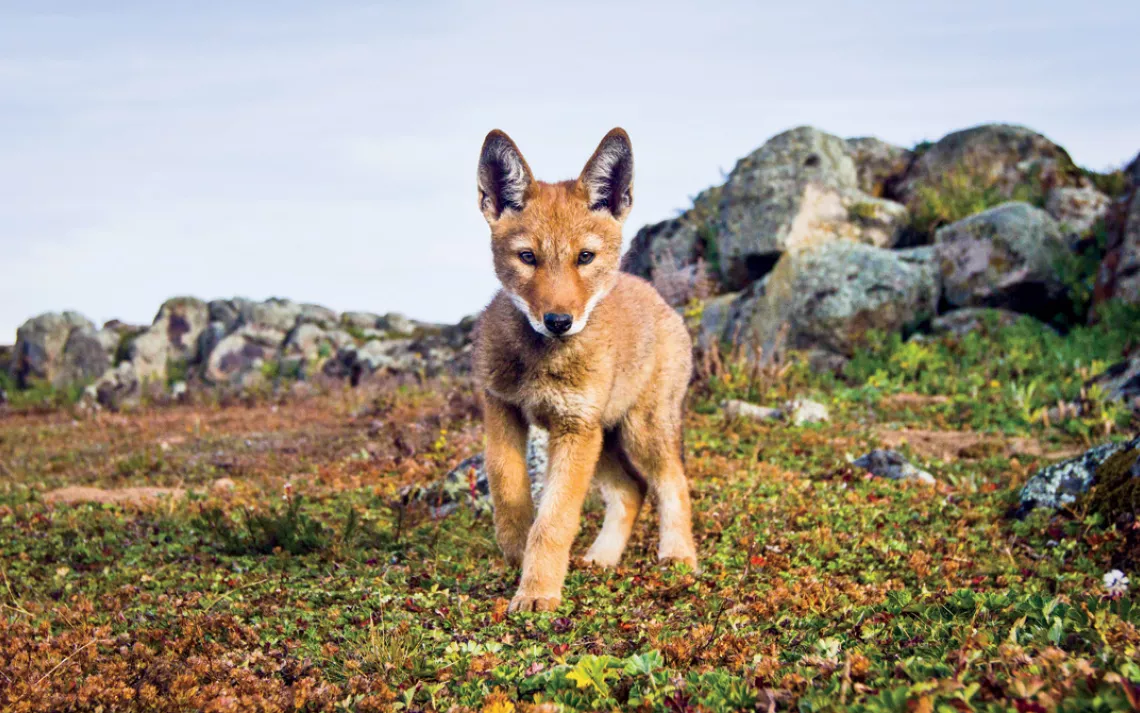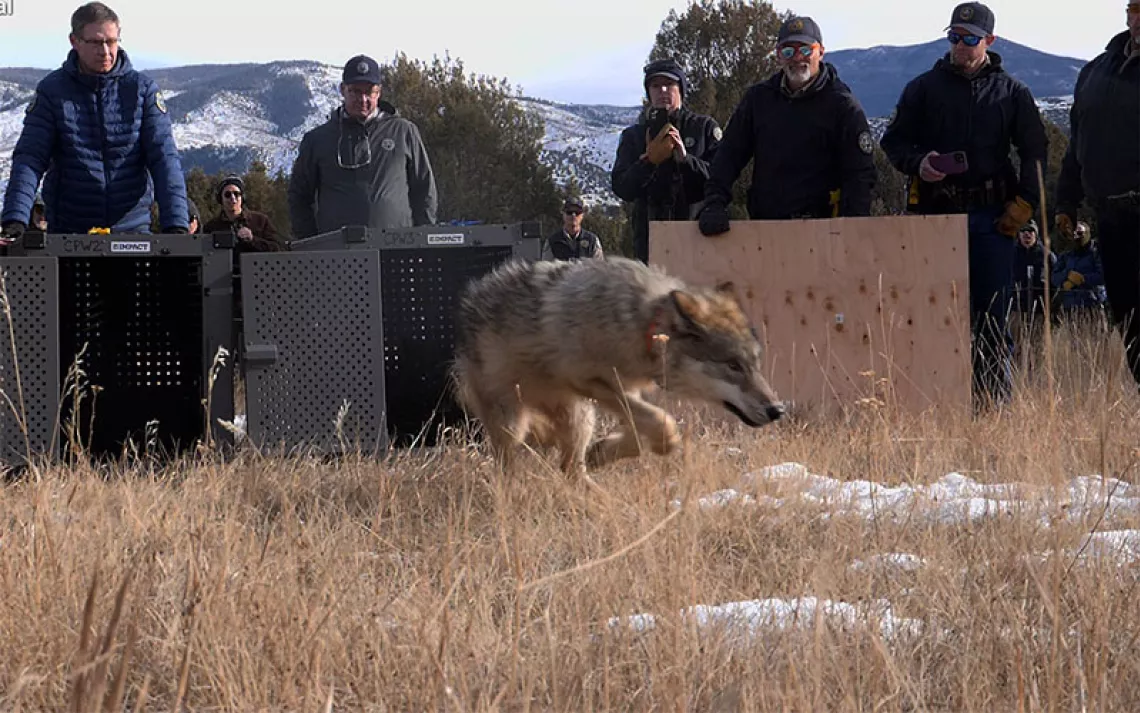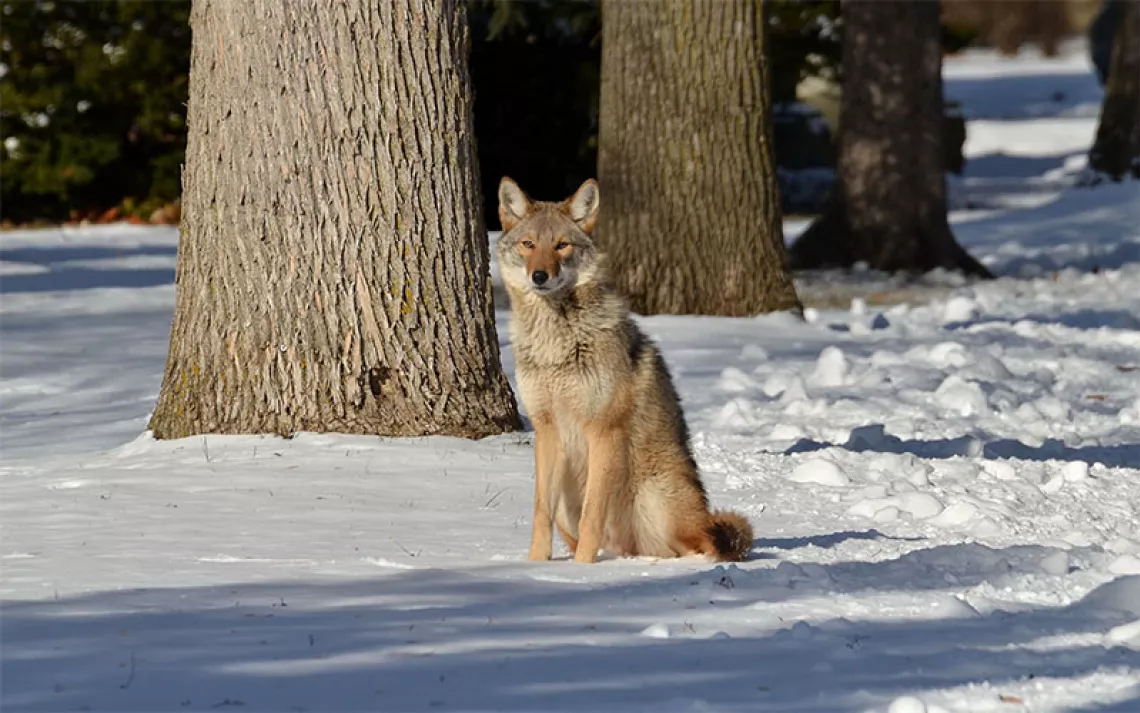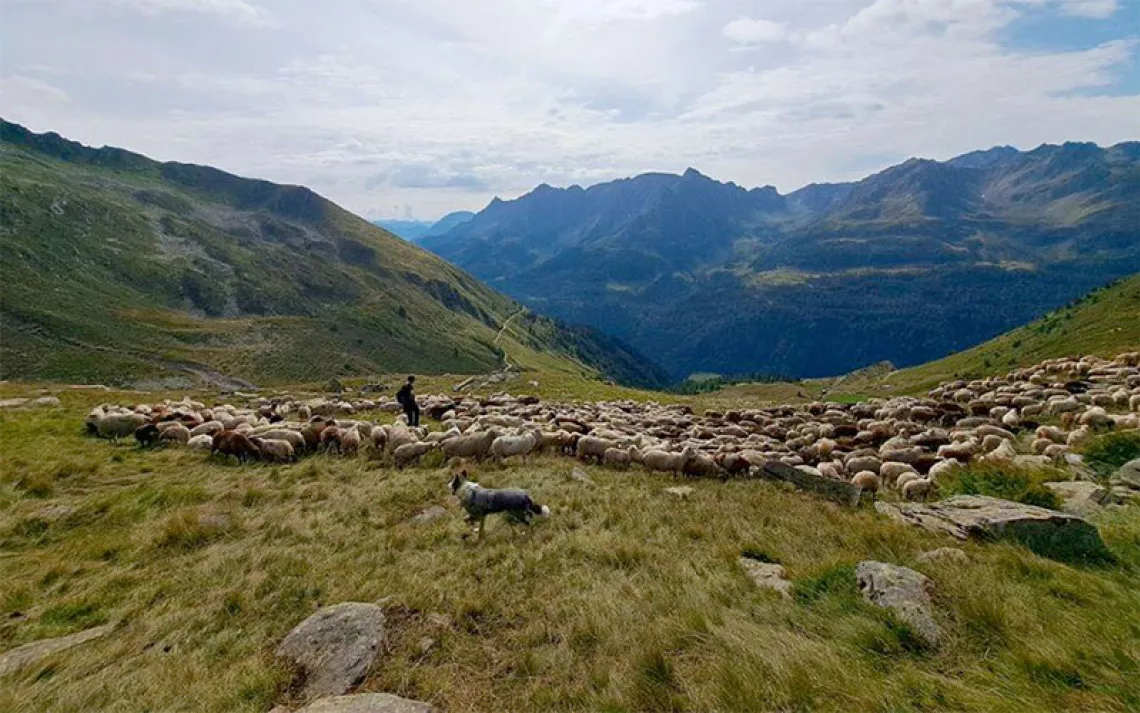Endangered? Who, Me?

An Ethiopian wolf pup, photographed by a remote camera in Bale Mountains National Park. | Will Burrard-Lucas/Nature Picture Library
When an Ethiopian wolf is hungry, it goes looking for its principal prey, the big-headed mole rat. The canid has a number of strategies for catching the rats. It can use its long, narrow nose—nearly half the length of its head—to scoop them from their burrows. Or it can enlist the help of the friendly neighborhood gelada monkeys. The clever predator hides amid herds of geladas, and unsuspecting rats darting from burrow to burrow are snatched up by a wolf among primates. (In return, wolves refrain from picking off baby geladas, which aren't much bigger than the rats.)
Ethiopian wolves are solitary hunters, but come nightfall the pack huddle together to sleep. On cold nights, they prepare communal beds made of dead scrub uprooted by big-headed mole rats.
For all its cunning, though, the coyote-size critter cannot outwit humans. As its rodent-rich highland habitat is reduced by subsistence farming and livestock grazing, so goes this species of wolf, one of the world's most endangered canids. Rabies outbreaks spread by domestic dogs in 2003-04 and 2008 devastated the population, and now fewer than 500 remain. Vaccination efforts may be the wolf's only hope.
This article appeared as "Endangered? Who, Me?" in the January/February 2016 print edition of Sierra.
WHAT YOU CAN DO
Visit the Ethiopian Wolf Conservation Programme to learn about ongoing efforts to protect this species.
 The Magazine of The Sierra Club
The Magazine of The Sierra Club






